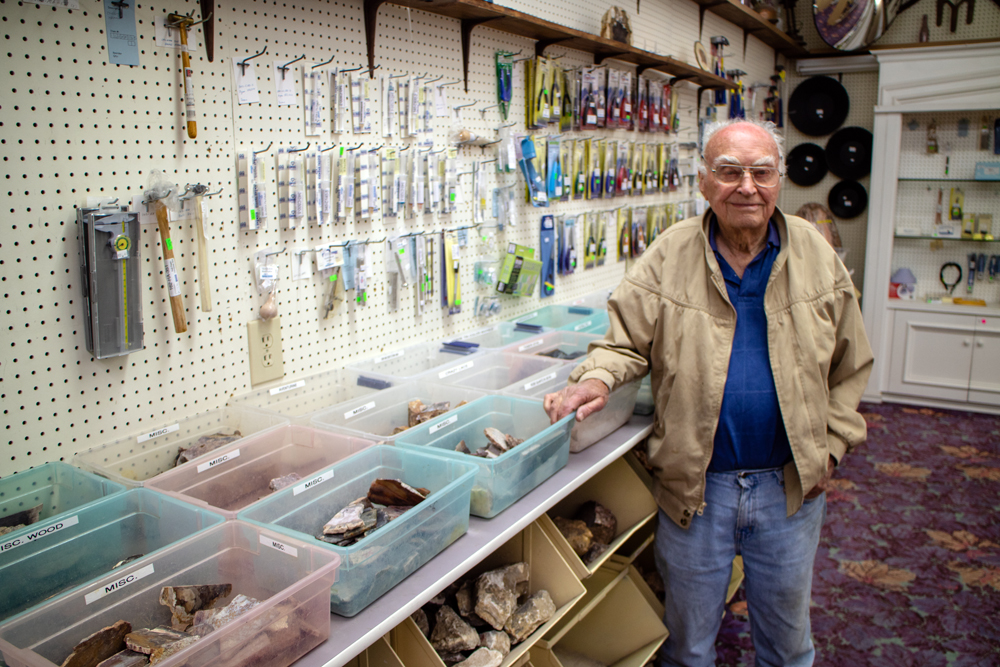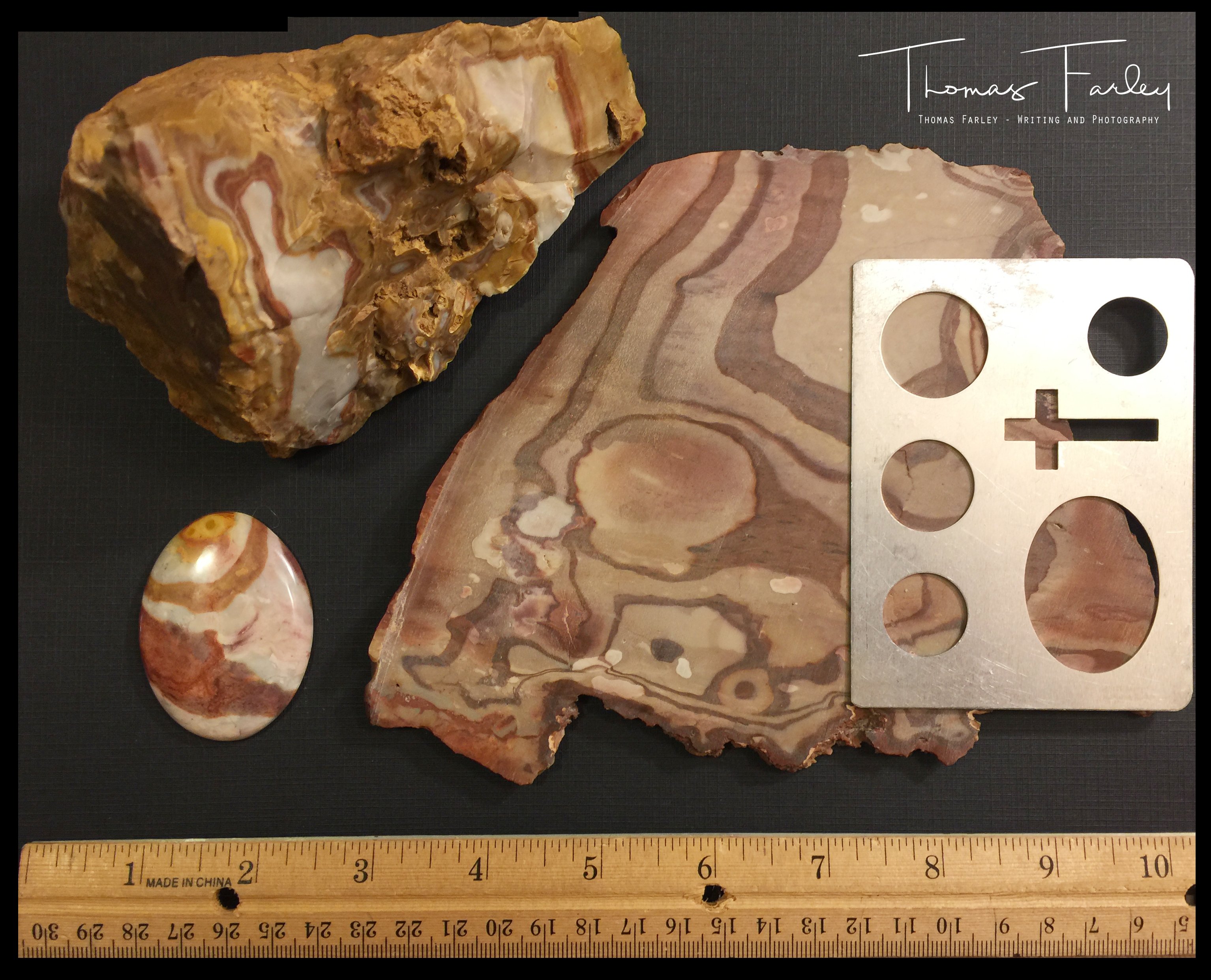I wrote previously that the BLM doesn’t recognize rockhounding anymore as an activity. While that may be the case at the national level, the BLM in California still recognizes rockhounding as the vital and rewarding hobby that it is.
This page recognizes rockhounding with a video featuring Bill Depue, Founder and President of Diamond Pacific Tool in Barstow, perhaps the leading manufacturer of lapidary equipment in the world. I had the great privilege of meeting Bill a month or two ago and I wrote about it here. In keeping with his modest character, Bill wears a Diamond Pacific hat but never mentions his involvement.
Interestingly, that page does not list all California BLM rockhounding sites, it just mentions that the activity exists. Their Needles field office once had no reservation about describing sites.
Click here for an archived page that list sites under Needles’ management along with photographs showing what might be collected at each one. This is true endorsement. But I appreciate any effort that BLM California makes. Thank you!
Photograph below of Bill Depue.


